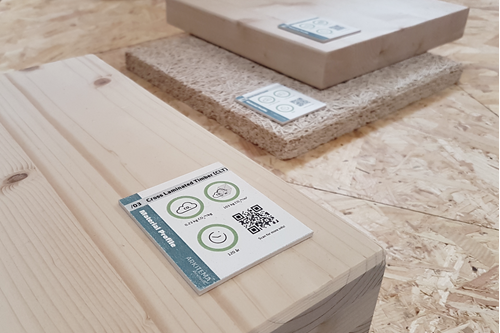- Gæsteblogger
- 26. august 2020
Build in Wood 2020 – Day 2
This post has been written by Henriikka Taipale, an MSc student of Energy-efficient and Environmental Building Design at Lund University. She also writes about wood on newnordictimber.com.
Build in Wood 2020 – Day 2
The Swedish city of Växjö opened the second conference day by introducing its groundbreaking approach to wood construction. The long-term wood strategy, realized with close cooperation between Växjö municipality, academic institutions, and local industry, has allowed Växjö to pioneer modern timber construction for the past 15 years. Today, 48% of all new municipal buildings are structurally wood-based. The message to their Danish counterparts was clear: Make municipal demands for wood in procurement, stimulate and encourage relevant market players, and take the opportunity to develop cutting edge research with local academia.

Henning Larsen partner Signe Kongebro gave a comprehensive outline of the company’s experience with wood construction so far. On a European scale, their experience was that clients’ current demand is for smaller wood buildings, materialized as statements for change, and designed as appendices to larger traditional buildings. We also learned about the Vejlands kvarter masterplan for the district of Amager in Copenhagen. The 18-acre area is expected to offer 2,000 new homes, with a third of the footprint developed as versatile green areas, and potentially trialing self-driving mobility options.
The topic of economics in building with wood was discussed by Austrian and Danish specialists offering different perspectives on how the perceived risks can be minimized. Collecting accurate cost indicators in an up-to-date shared database and professionalizing timber system construction with building process management were a few of the solutions mentioned. Also the pure economic savings achieved by the high level of prefabrication available and the fast construction times possible were once again underlined.
During Build in Wood 2019, the housing project of Skademosen in Roskilde was introduced. This year, the project team returned to discuss learnings now that the tenants have settled in. While the residents reported high satisfaction and wellbeing for living in homes with exposed timber structures, some concerns for possible moisture problems and mold risk remained. The developer and architect concluded that the necessary precautions included applying an extensive moisture management plan, ensuring an airtight construction of the building envelope and protecting the exposed wood surfaces at crucial points of the project timeline.
The closing presentation was delivered by White Architects and showcased the Sara Culture Centre in Skellefteå, northern Sweden. Through practice-based research and experience collected over the past several years, the company has designed one of the world’s largest timber buildings to date. With expected completion in 2021, the building will host a theatre, museum, art gallery, the city library as well as a hotel. The revolutionary project has been driven with a BIM model consisting of 300,000 elements, shared between 19 companies and 72 individuals delivering the project.
For the third year in a row, Build in Wood brought together a great number of stakeholders, practitioners and politicians willing to overcome the challenges of further increasing wood construction in Denmark. Let us all be the agents of change, and meet again for Build in Wood next year!
Læs blogpost fra Build in Wood dag 1 her

